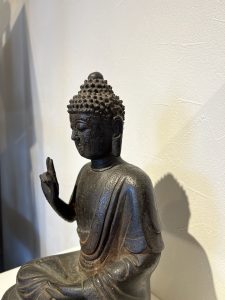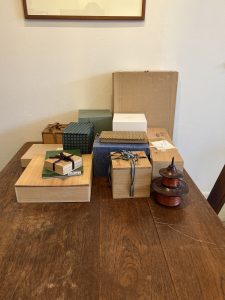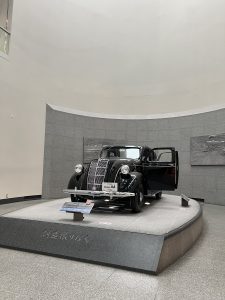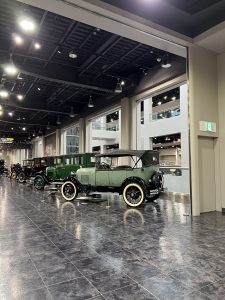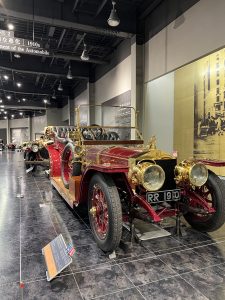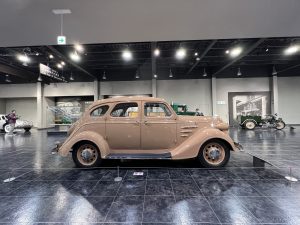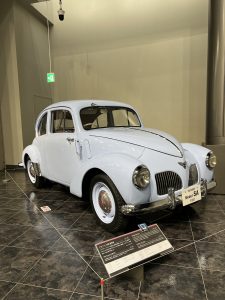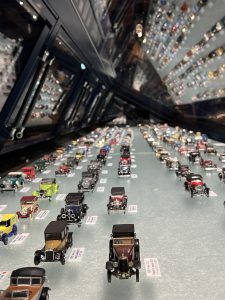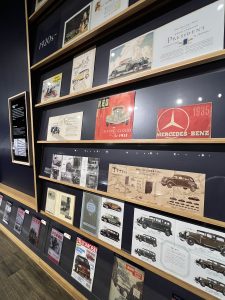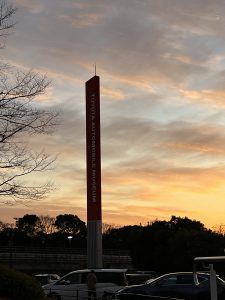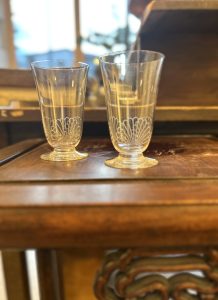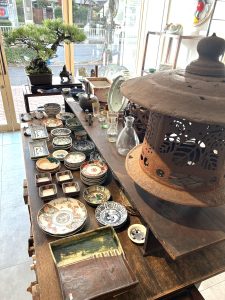Merry Christmas🎄!。

今日はクリスマスイブ。通勤の車から行き交う方の様子を眺めておりますと、忙しくもどことなくウキウキした表情の方が多いような気がいたします。みなさん何処へ向かているのでしょうね。
パーティやプレゼントなどなどいろいろ楽しみなクリスマスですが、自分くらいの年齢になりますと、さすがに驚くようなプレゼントはないのですが、毎年いつもお世話になっているお稽古事の先生からアンティークのポストカードを頂きます。
クリスマスのデザインのカードなのですが、聞くところによりますとアンティークカードのコレクターのようでして。お洒落な先生ですので集めているものもお洒落です。他にもお仕事がら、リバティの生地をたくさんコレクションしているようでして、こちらもお洒落ですね。
人って大なり小なり何かしらコレクションしているな…と思うのですが、こんなふうに、その人となりも伝わってきます。また、「なにか好きなもの集めてる?」って尋ねると意外なものだったりして、意外な人となりも分かったりもします。私は話題に困った時にこのコレクションをネタにすることがあるのですが、どの方も楽しそうに話してくださるので、会話に困ったときにはとても助かります。
また、このお仕事をしておりますと、やはり骨董品や古美術品もコレクションの最たるものでして、大好きな作家の作品や、好きな国、時代もの、窯の茶碗、刀剣甲冑などなどお客様の素晴らしいコレクション数々については語りつくせませんし、その多種多様さに感心することが多い仕事だとも思えます。
他にもTVでみたのですがマンホールのふたを集めている方や、定番のアニメのフィギア、推しのグッズ、高価なものでブランド物や時計などなど。また、小さな子供が外から拾った石を集めていたり、カードゲームのカードを集めたり、人の数だけコレクションってあるようで、面白いですよね。
また、そのコレクションが人によってはものすごい宝物に見えたり、はたまたガラクタに見えたり。小さな子供が得意げに集めてきた山盛りのダンゴムシに卒倒するおかあさんがいたり、自分にしか分からないあの世界、なんなのだろうな笑と、いつも思います。
自分もたまに集めることがあるのですが。一時期、美術館やイベント限定のマスキングテープの収集にハマりました。(些細なコレクションですが…)ただ、飽き性のためになかなか最後まで集めきれないことが多く、逆にきっちりと全部揃えられる人は凄いなあと憧れたりします。また、「ほしい」と思ったときに出揃っているものはまとめ買いしたりしてしまうので、「集めたい」という気持ち一つとっても、その程度・範囲・動機等、非常に個人差が大きいのもコレクションなのでしょうね。
それにしても、この「集める」という行動や「集めたい」という気持ちは、人間の本能に近い部分に存在しているのか、この「集めたい」という気持ちは、時にブースター(燃料)になり得る動機のような気もします。
私もマスキングテープを収集していた頃は、何かにとりつかれたように情報を集め、わざわざ遠方まで出向き購入し、そのことを人に話すとわざわざ買ってきてくれたりと、あのブースターはなんなんでしょうね笑。しかも自分にしかわからないんですよね。
とは言え、こっそりひっぱりだして誰にも見せずひとりコレクションをニンマリ眺める方もおいででしょうが、昨今のコレクションはSNSなどを見ていますと、それとは少し違ってきているような気がしています。自分もSNSで発信とまでは行きませんが、近しい人に得意げに見せたりしていた記憶がよみがえりますので、やはりそれを通して話したりしてどこかで人とつながりたい気持ちがあるのでしょうね。
さらにせっかく集めたしSNSにアップして、これを綺麗に揃えて人に見てもらいたい、ちょっと自慢したい、私みたいに話すきっかけにしたいなど「人と関わる」きっかけとして「集めたい」は、自己認知欲求をさらにに満たしてくれてて、そのブースターに拍車をかけるのでしょうね。
そういえば先日も猫ちゃんを飼っていて、猫ちゃんのグッズを集めている方とお話していますと、私も猫ちゃん好きなのもあり、やはり話は弾みました。また、猫ちゃんによってコミュニティが広がりいろんな情報も入って来るとのことで、ほんとにいろんな事よく知っていましたね笑。
こんなふうに現代の生活においてはコレクションはいろいろ繋がる・広がるツールとして、ひとつでも持っていた方がいいのかもとも思いました。
クリスマスからは話はずいぶんそれてしまいましたが、ちびっこのみなさん、今夜のサンタさんからのプレゼント楽しみでありますが、もしかしたらそのプレゼントが、みなさんのコレクションとなるものかもしれません。明日の朝楽しみですね。
それではごきげんよう。(スタッフY)
Merry Christmas🎄!
Today is Christmas Eve. As I look at the people passing by from my car on the way to work, many of them seem to have a busy but somehow cheerful expression on their faces. I wonder where everyone is headed.
I am looking forward to all sorts of parties and gifts for Christmas, but when you are my age, you don’t really get any surprises, but every year I receive a gift of an antique postcard from a teacher at my regular practice.
The cards are Christmas cards, and from what I hear, she is a collector of antique cards, and since she is a fashionable teacher, the ones she collects are also stylish. She also has a large collection of Liberty fabrics from her work, which is also fashionable.
I think that people have some kind of collection, large or small, and this kind of collection also conveys the personality of the person. And when I ask them, “Do you collect anything you like? I also get an unexpected insight into their personality when I ask them if they collect anything they like. I sometimes use this collection as a topic of conversation when I am at a loss for a topic, and it is very helpful when I am at a loss for conversation because everyone seems to enjoy talking about it.
I can’t tell you about the many wonderful collections of my customers, such as works by their favorite artists, their favorite countries, period pieces, kiln bowls, swords and armor, etc., and I am often impressed by the variety of their collections. I can’t tell you about all the wonderful collections of our customers.
I have also seen people collecting manhole covers, anime figurines, collectibles, expensive brand-name items, watches, and so on. Also, small children collect rocks picked up from outside, collect cards from card games, etc. It is interesting that there seem to be as many collections as there are people.
It is also interesting to note that there seems to be as many collections as there are people, and depending on the person, the collection may look like a tremendous treasure, or it may look like a piece of junk. I always wonder what it is about that world that only I can understand.
I sometimes collect them myself. For a while, I got into collecting masking tapes limited to museums and events. (It is a trivial collection, but…) However, I am often too bored to finish collecting them all, so I admire those who are able to collect them all. I also tend to buy in bulk what is available when I feel like I want it, so even if I have a desire to collect something, the degree, scope, motivation, etc., varies greatly from person to person.
I feel that this “collecting” behavior and the desire to collect may exist in a part of human nature close to our instincts, and that this “desire to collect” may be a motivator that can become a booster (fuel).
When I was collecting masking tapes, I collected information as if I was obsessed with something, went all the way to a distant place to buy it, and when I told people about it, they went out of their way to buy it for me. And only I know what it is, right?
However, there are probably people who secretly pull out their collections and look at them without showing them to anyone, but looking at social networking sites, I have a feeling that collections these days are a little different. Although I don’t go so far as to say that I send out my collection on SNS, it brings back memories of proudly showing it to people close to me, so I guess I want to talk about it and connect with people somewhere.
I also want to upload my collection to SNS so that people can see how beautifully I have arranged them, or I want to show them off, or I want to use them as an opportunity to talk to people like I do.
Speaking of which, the other day I was talking with a person who has a cat and collects cat goods, and since I am also a cat lover, the conversation was still lively. He also told me that the cat community is expanding and that he is getting a lot of information about cats.
I thought that in today’s life, it might be a good idea to have at least one collection as a tool to connect and expand in various ways.
I know this is a long way off from Christmas, but I hope all of you little ones are looking forward to your presents from Santa Claus tonight, and maybe that present will be your collections, so I look forward to seeing you tomorrow morning.
Have a good day, and I look forward to seeing you all tomorrow morning. (Staff Y)
*****************
ご実家の整理やお片付けなどをされている方のご相談などが多くございます。
お片付けなどくれぐれもご無理のないようになさってくださいませ。
風光舎では古美術品や骨董品の他にも絵画や宝石、趣味のお品など様々なジャンルのものを買受しております。
お片付けをされていて、こういうものでもいいのかしらと迷われているものでも、どうぞお気軽にご相談下さいませ。
また風光舎は、出張買取も強化しております。ご近所はもちろん、愛知県内、岐阜県、三重県その他の県へも出張いたします。
まずは、お電話お待ちしております。
愛知県名古屋市千種区姫池通
骨董 買取【古美術 風光舎 名古屋店】
TEL052(734)8444
10:00-18:00 OPEN
#出張買取#骨董#古美術#骨董品#絵画#版画#茶道具#刀剣#彫刻
